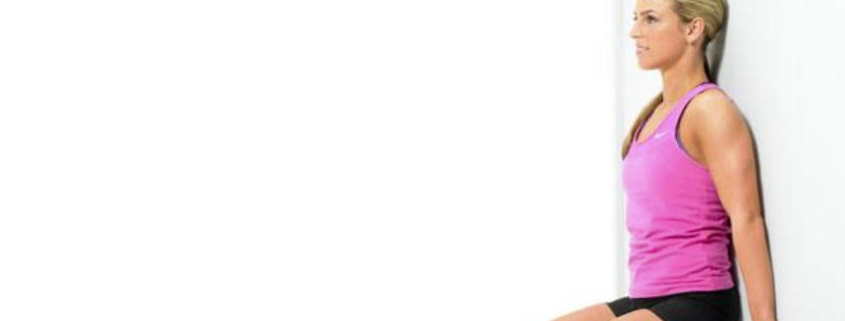Wall Sits: Good or Bad? Do wall sits do anything?
“The mechanical principles on which Osteopathy is based are as old as the universe.”Philosophy of Osteopathy
A ‘wall-sit” is where you lean your back against the wall and hold thighs parallel to the ground in a squat position, or you have a ball against the wall and you move into said wall position. The ‘wall-sit” is a very common exercise used by athletes, coaches, exercise instructors and fitness enthusiasts. Some people use it as a step down from a full squat as they may feel uncomfortable with a barbell on their back, or even doing unassisted bodyweight squats, so they revert to this version.
Some people assume the “wall-sit” is a beneficial exercise. Leaning against a wall or a stability ball doing a static (isometric) exercise held for time is the main issue. The “wall-sit” exercise is quad dominant which is a muscle group designed to extend the knee but the quads are intended to activate and relax and not stay contracted. Apart from select athletes (i.e. skiers and jockeys) or in rehabilitation wall sits may not be the best use of your time. Using a muscle in a manner in which it was not designed creates faulty neuromuscular movement patterns and may result in muscular imbalance. Doing isometrics on the core or scapular stabilizers for example would be appropriate and encouraged. You want these muscles on and holding with endurance. Isometric exercises can be effective but nature’s design suggests using them on stabilizing muscles not prime movers.
There are certain scenarios where the “wall-sits”/stability ball squats may be used for rehabilitative purposes. The concept of the wall sit is to strengthen the muscles to help you perform squats if your knees hurt. Many people have existing knee problems, and the knees are quite susceptible to pain with ‘normal’ activities such as running and playing various sports. Care must be taken to find out why the person’s knee hurts before they should be placed against the wall. Then give appropriate exercises to help strengthen (without hurting or exacerbating) the area. Osteopathic care will seek to evaluate and treat biomechanical pain and dysfunction of the knees, back etc and advise on appropriate biomechanical movement of the body.
Sometimes a person may suggest they are doing wall sits to “strengthen the knees” to help them squat. However, the positioning of the wall-sit does not transfer well to other squat styles, other movements in sports performance, and has minimal carryover to standard activities of daily living. Doing so essentially deactivates the stabilizer muscles in your trunk and the muscles on the back side of your body (posterior chain). With squatting, the key posterior muscles are the glutes, hamstrings and erector spinae (the muscles that help maintain upright posture in our backs). The bottom position of the wall sit calls for a vertical shin angle and a vertical torso angle. This position is not conducive to common squat styles.
It is important to note that animals move with compound movements which make them naturally strong, fast and with a very well-conditioned musculoskeletal system. Humans should consider natures design and the rational why you might train muscles in isolation.
Train with purpose, knowledge, and passion knowing the body functions best as a unit as nature intended. If you are struggling with an injury you may want to consult your local osteopath.
View a list of common complains that Osteopathy can assist with
Discovery the benefits of Osteopathy
- What is Osteopathy?
- Adult health issues
- Babies and Children
- During and after pregnancy
- Common Complaints
- Testimonials
- Sports Injuries
- Genral Osteopathy FAQs
- The Science & Reasearch



